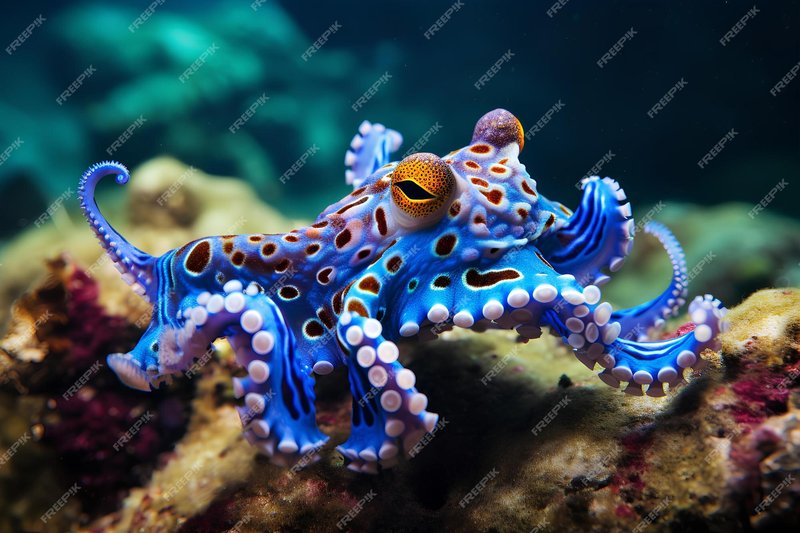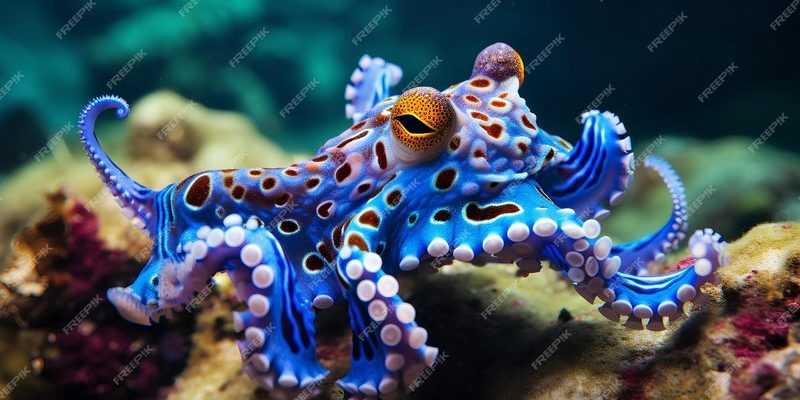
Here’s the thing: blue-ringed octopuses can be found in various habitats, but they’re mostly associated with warm coastal waters. Think of them as the mysterious residents of the ocean’s most vibrant neighborhoods. Whether you’re an avid scuba diver or just curious about marine life, understanding where these enigmatic creatures reside can enhance your appreciation for them.
Let me explain further. The blue-ringed octopus doesn’t just occupy any corner of the ocean; it prefers specific environments that suit its lifestyle. So, what do these habitats look like? Let’s dive in and explore the different places these incredible animals call home.
1. Coastal Waters of the Indo-Pacific
The blue-ringed octopus primarily makes its home in the coastal waters of the Indo-Pacific region. This vast area encompasses places like the Great Barrier Reef, coastal Australia, and southeast Asia. The warmth of these waters is crucial for their survival.
You might be wondering why they prefer these specific regions. The answer lies in the availability of food and shelter. Living among coral reefs and rocky crevices, blue-ringed octopuses find plenty of small crustaceans, their main source of food. Plus, these environments provide hiding spots from predators, making them feel safe.
Interestingly, the vibrant colors of the blue-ringed octopus help it blend into these colorful habitats. With the ability to change colors, they can camouflage themselves against coral, seaweed, and rocks. This clever adaptation makes hunting easier while keeping them out of sight from potential threats.
2. Depth Ranges: Where to Look
When searching for blue-ringed octopuses, depth matters. These creatures typically inhabit shallow waters, often found at depths of around 5 to 50 feet. They enjoy areas that are rich in biodiversity, which means there’s always something to eat nearby.
While you might think deeper waters could host these fascinating creatures, they prefer the comforts of shallower zones. The reason? Well, these areas are more accessible to light and warmth, crucial factors for their survival. In contrast, colder, darker depths aren’t ideal for their hunting and breeding activities.
During your next beach trip or snorkeling adventure, remember to stay cautious in these shallow waters. Blue-ringed octopuses tend to hide among rocks and sand. If you look closely, you might just catch a glimpse of their stunning blue rings!
3. Habitats: Rocky Reefs and Tidal Pools
One of the favorite spots for blue-ringed octopuses is rocky reefs. These areas provide the perfect blend of food and shelter. Imagine the rocky landscape like a treasure chest, filled with crevices that these octopuses can call home.
In addition to rocky reefs, tidal pools are another habitat where you might find them. Tidal pools form when ocean water gets trapped in depressions during low tide. These pools create miniature ecosystems that offer plenty of food options for blue-ringed octopuses.
In tidal pools, you’ll often find these octopuses resting during the day, waiting for nightfall to venture out for a meal. If you’re considering a visit to tidal pools, always tread carefully – not only to protect marine life but also to keep an eye out for these clever little hunters.
4. The Importance of Preservation
Now that we understand where blue-ringed octopuses live, it’s important to consider the impact of human activity on their habitats. Coral reefs, rocky shores, and tidal pools are vulnerable to pollution, climate change, and overfishing.
Protecting these environments is crucial for the survival of many marine species, including the blue-ringed octopus. Conservation efforts play a significant role in safeguarding their habitats. By promoting clean oceans and sustainable fishing practices, we help ensure these octopuses thrive.
Supporting initiatives aimed at preserving coral reefs and coastal ecosystems can make a difference. Consider participating in local beach cleanups or spreading awareness about the importance of marine life. Every action counts!
5. Encountering Blue-Ringed Octopuses
If you’re lucky enough to encounter a blue-ringed octopus, know that it’s a special moment. However, approaching them requires caution. Although stunning, they are also venomous, and their bites can be deadly.
Snorkeling or diving offers fantastic opportunities for observation, but it’s essential to keep a respectful distance. Use underwater cameras or simply enjoy their beauty from afar. Remember, these creatures are not just for our entertainment; they’re vital parts of their ecosystems.
If you’re an aspiring marine biologist or just a curious explorer, seeking out these octopuses can be thrilling. However, always prioritize safety and respect for nature when venturing into their habitats.
6. Conclusion: The Wonder of Blue-Ringed Octopuses
Blue-ringed octopuses are not only captivating residents of the ocean but essential players in the marine ecosystem. Their unique habitats, from rocky reefs to tidal pools, offer a glimpse into the wonders of marine life.
As we learn more about where these incredible creatures are found, we become inspired to protect their environments. Understanding their world can motivate us to take action, ensuring that future generations can appreciate the beauty and mystery of blue-ringed octopuses. So, the next time you find yourself near coastal waters, keep an eye out for these mesmerizing octopuses—they might just steal the show!

